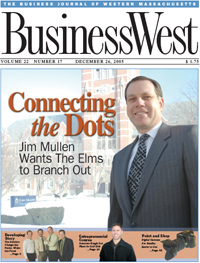Often, an attempt with good intentions is effective when unrolling a new business practice.
But when it comes to the complicated topic of branding a health care entity, some say the old college try could do more harm than good.
Branding, or brand development, is an increasingly prevalent aspect of many marketing initiatives across several industries. Once utilized primarily by those in the retail, financial and legal sectors, branding attempts to define a business by illustrating and calling attention to specific services, strengths, and attributes through a number of initiatives. Those can include advertising, logo design, mission statement and tag line development, sales or event promotions, publicity, internal training, and much more, but all draw from a common, sustainable theme.
Several industries are now treating branding and rebranding as the most important aspect of their marketing endeavors, and the health care industry is no exception.
Many marketing professionals contend, however, that health care is following the lead of many other industries when it comes to brand development, and still has a long way to go in terms of understanding effective branding initiatives that resonate within a large audience.
There is the issue of marketing within health care in general, for one; some, including John Bidwell, president of Bidwell ID in Florence, say that in the past, providers have shunned the practice of marketing health care services.
“The uncertainty of health care plus the explosion of information on the Web has made for well-informed patients,” he said. “Marketing has traditionally been looked down upon, but now providers are realizing that the better-informed patients are making choices on where to go, and that they have to work to retain and attract those patients.”
There’s also the time and money required to roll out a new branding initiative, and the already lean resources of many health care facilities can be prohibitive. Plus, according to Suzanne Hendery, corporate director of Marketing and Creative Services for Baystate Health, the very nature of health care as a service-related industry can make pinpointing those tangible aspects of the business difficult.
“Branding for health care entities differs from product-related businesses,” she said. “In a service business, outstanding people are your key to success, and recruiting and retaining the best of the best can be a challenge, especially when there are national shortages in many health care professions.”
And finally, with health care still bringing up the rear when it comes to branding and marketing in general, there is the problem of the learning curve – knowing what branding is, what it will entail, and how to best implement it within a given facility and, for that matter, a unique region like Western Mass.
John Garvey, president of Garvey Communications in Springfield, said effective branding could, indeed, enhance the overall quality of health care itself.
“But attempting to brand … that can create more dangers than opportunities,” he said.
The Product of Wellness
That’s true on the national level, but even more so on the regional level, where a facility’s competition could be quite literally across the street, and budget pressures are felt that much more.
As Bidwell noted, the national health care industry is one that has historically shied away from big marketing blitzes. He said that was because, for a long time, the work spoke for itself. Patients didn’t travel far for their care, they didn’t shop around for the best possible physician or program, and they stuck with one doctor – their doctor – often for their entire lives.
But all of that has changed. “My general feeling is that health care is going through a huge cultural shift,” Bidwell said. “In the past, the medical industry was looked at sort of like a religion – people stayed with one doctor and did what they were told. Patients weren’t really proactive, but they’re becoming increasingly so. They don’t mind traveling so much, and locally there are many choices to pick from.
“Also, the rising uncertainty of health care costs is spurring much more shopping around,” he continued. “So overall there have been huge changes across the board in health care, and branding is becoming a response to that. What health care businesses are having to do now is recognize that they need to pay attention to their brand in order to stay competitive.”
And when it comes to defining branding, Bidwell noted that the term does indeed extend across several aspects of marketing and development within a given company or facility, and that will likely prove to be the biggest challenge for health care providers.
“It’s not just designing a new logo,” he said. “Branding begins as an exercise in finding out who you are and where you want to go. Businesses have to be brutally honest with themselves in regard to what they have been.
“My feeling is that health care in general is not on the cutting edge of branding,” he continued. “That is changing, though, and I think health care professionals will catch up fast. They are a smart group, and once they recognize the importance of branding and put in the resources, they could do very well.”
A See-through Message
Garvey added that branding can be defined as a promise, which focuses on specific attributes of a company or a particular service. Health care businesses typically want to pledge the best care to their patients and clients, and that is where branding usually begins for them.
But beyond that, he agreed with Bidwell that branding signals a major shift in marketing, which creates the need to place the most value on concrete, objective aspects of a business, not vague sentiments, and also an added challenge for all health care providers.
“The value a facility is trying to convey can’t be superficial,” he said. “A branding initiative can’t focus on something like, ‘We Appreciate You.’ It has to center on bringing out core attributes of a company that are unique.
“But,” Garvey continued, “the message also needs to be sustainable, and that’s where it gets more complex for businesses in health care.”
The reasons why are varied. First, a message that is sustainable must also keep an audience’s interest for a long period of time, and not mirror the messages of competitors too closely. It must be comprehensive, with all aspects tailored to share some common bond – a logo, use of the same, yet still fresh, fonts and design within ads, and the constant use of a tag line or mission statement are just a few examples. In addition, a company’s brand must also help to describe current advances at a given health care facility, thus proving that a business is, indeed, ‘keeping up with the Jones’.’
But those reasons are complicated, Garvey said, by the increased importance placed on transparency in health care – the release of information to the public regarding internal practices or a facility’s financial and patient-related statistics.
“If branding is a promise of something real and definable, then what happens if somehow that promise is broken?” he mused. “That danger, in relation to branding an institution, is that much more real as more information regarding quality in health care is made available to the public. The accountability becomes that much more important to marketing initiatives. It makes branding in and of itself risky.”
Bidwell agreed, adding that failure to address increased transparency within a given health care providers’ marketing messages could have a detrimental effect on a provider’s bottom line.
“Health care (providers) must left their actions like never before, and can’t hoard information,” he said. “The industry must explain what it does and be forthcoming with data. If not, the information will get out anyhow and the provider will simply get a reputation as a stonewaller. ‘What are they hiding?’ people may ask.”
Branding a Region
Still, there are some national health care entities that represent the best examples of effective brand development; Garvey cited Dana Farber and the Boston Children’s Hospital as two examples, based in part on their strong ties to nationally-renowned programs. But he added that local institutions face unique hurdles, created by increased competition within one of the region’s largest sectors. It’s important to remember, he said, that no one branding strategy is a cure-all for a health care provider’s marketing ills, and moreover, national standards for brand development differ greatly from those specific to Western Mass.
“Institutions like Dana Farber can lean on one major strength, like the Dana Farber Cancer Program, and create incredibly effective brand recognition based on that aspect,” Garvey explained. “But on the local level, health care providers are still facing the challenge of translating to the public that they can be all things to all people. Currently, what we’re seeing a lot of regionally is ‘We Got,’ and ‘We Have,’ in reference to new staff, programs, equipment … that’s the big branding message that providers are using now, and it can be effective as long as providers are consistent, clear, and able to cut through clutter with the message they’re sending.”
Garvey noted further that many institutions and smaller health care providers and businesses are quick to make their staff, including physicians, nurses, and others, a core piece of their materials, and that has proven to be an effective route.
“There are rock stars in the health care world, especially when it comes to cancer care, surgical technology, or cardiology, for example,” he said. “Those are the people that are famous for breakthroughs or for treating celebrities, and some national providers have used them as part of their brand with good results. We might not have those types of physicians here, but calling attention to familiar faces still works for us on a different level.”
Bidwell added that Western Mass. also excels in touting the benefits of a more holistic approach to medicine, and that includes spotlighting health care professionals in addition to physicians, as well as programs that draw from many different disciplines. He said that could stem from the unique history of the region.
“Many utopian societies were established here,” he said. “My gut feeling is that legacy is still here on some level – marketing of a more holistic approach to wellness is appearing here more than elsewhere.”
Regardless of the message, however, it must also be filtered through diverse media and means of communication, and touch every aspect of a business, reflecting a facility’s overall mission statement while remaining rooted in the tangible.
Indeed, a rebranding initiative doesn’t stop at a new logo design or a print ad campaign. Rather, it extends into television, radio, and Web advertising; sales strategies; internal and external publications; public relations initiatives; narrow-casting, or reaching niche audiences through various means, and other marketing tools.
The Sum of All Parts
Hendery told BusinessWest that increased attention to branding within the health care sector signals acceptance of a larger marketing shift, both nationally and regionally. But she stressed that an innate understanding of what is involved in brand development beyond marketing is necessary before any business or facility can launch a branding campaign.
“Because the term ‘branding’ is used so often, some don’t understand all that it means,” she said. “Branding is not advertising, and not just marketing and PR. It is the job of everyone in the organization, because when branding is done right it is fundamental to all you do, tied to your mission, vision and measurable goals – linked to every action you take, internally and externally.”
She said brand development extends across an entire business, affecting everything from employee involvement to quality control.
“For any business, before a brand is developed, the organization must have a number of solid business principles in place, a strong vision, identified values, service standards and operating principles that employees are accountable for, and measurable goals for the future based on a sound strategic plan,” Hendery explained. “Also key is a service-recovery program – because the way you treat a customer when a problem has occurred is where you gain or lose their loyalty and confidence – and a reward and recognition program for those employees who go above and beyond in exceeding the service standards. You also need a strong senior management team who easily lives and defines the best of the brand, and communicates often with employees and the community.”
Bidwell added that, to meet those needs, a healthy amount of research is required – of a facility’s strengths and weaknesses, of the population it serves, and of the practices of its competitors, to name a few.
“Of course, the amount of research will depend on your budget and size, but you need enough to get a realistic understanding of how you are perceived so that you can better align your communications with where you want to go,” he said.
And all of those issues must be addressed before any ad copy is drafted, or a new logo is even considered. But despite challenges, more health care businesses are creating a brand as one way to stay viable in an increasingly competitive industry.
Patients and Prospects
“There is a whole debate over whether or not branding is even the way to go for the health care industry,” Bidwell said. “ But I would contend that when it comes to an increasingly educated public making choices as to where they’re going to go for their care, marketing who you are and what you’re about is something a health care provider simply can’t ignore.”
When dealing with a more educated public, though, the health care industry is well served to keep in mind that in terms of branding, most are still students.
Jaclyn Stevenson can be reached at[email protected]




























